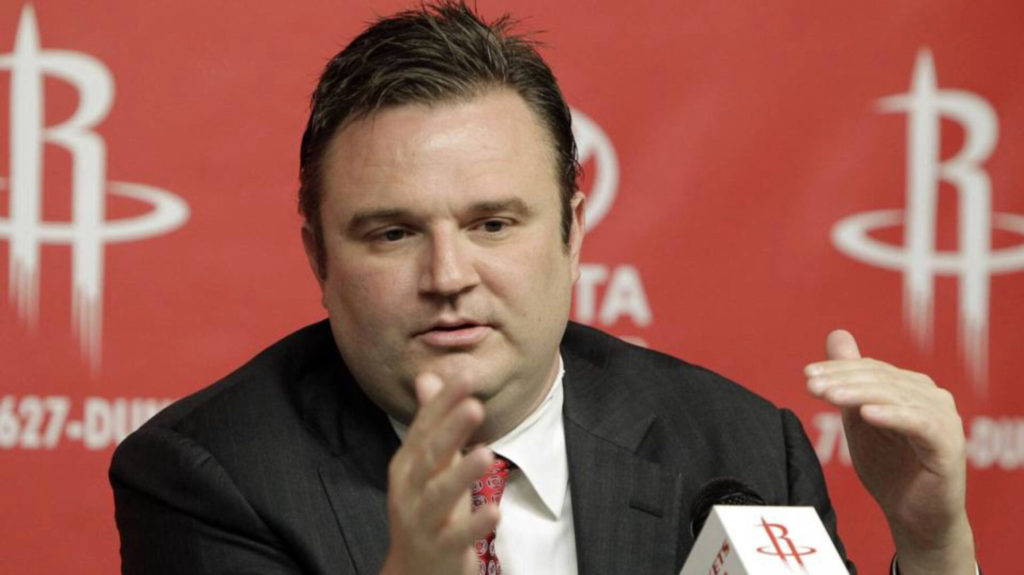
Back in 2006, Houston Rockets owner Leslie Alexander hired Daryl Morey to be Houston’s new general manager (GM). Morey was 33 at the time. He had no playing background. He had earned an MBA from Harvard, as well as an undergraduate degree in computer science from Northwestern University. His only NBA front office experience was the past four years he spent as senior vice president for the Boston Celtics. He initially came on as a consultant for new management hiring and ticket pricing. His role quickly evolved. By the time Morey left, he had built, tested, and implemented his own analytics-based model designed to assist with scouting, evaluation, trades, and free agency.
Michael Lewis, author of Moneyball and The Blind Side, described the new Rockets GM best: “(Morey) was the first of his kind: the basketball nerd king.”
Morey, like Alexander, had grown sick of how teams were currently making decisions about players. As a sixteen year-old, he had gone through The Bill James Historical Baseball Abstract. James’ book inspired Morey to envision a similar approach within an NBA organization. The problem was as he started ask questions, he realized how quickly the information for his answers ran dry. As a result, he decided to take matters into his own hands. Morey collected over 20 years of amateur and professional data, analyzed it, and tested to see what objective measurements best correlated to NBA success.
What he found changed everything.
Statistics like college points per game, rebounds per game, and steals per game were commonly thought of as predictors of professional success. When Morey tested these, however, he found the exact opposite: They had no correlation. As a result, he looked at new statistics. Instead of looking at rebounds per game, he looked at rebounds per minute played. Two players could both have 10 rebounds in one game, but 10 rebounds over 15 minutes is a lot more valuable than 10 rebounds over 35 minutes. One of those players was much more productive, but you can’t tell if you just compare rebounds.
The same thing goes for scoring. Two players could have both scored 30 points, but one of those players could have had significantly more scoring opportunities because the offense plays up tempo. These kinds of problems were ones Morey set out to solve with his new model. He never thought of it as “the right answer,” but instead “a better answer.”
The 2008 NBA Draft was a great reminder of this.
In Morey’s first year as GM of the Rockets, he used his new model to select two players in the 2007 NBA Draft with the 26th and 31st picks: Aaron Brooks and Carl Landry, respectively. The odds of getting an NBA starter with either pick was 1/100. Both became starters. If you look at rookie contract production (four years) for draft picks over the past decade, Landry and Brooks rank in the top 9 percent of over 600 players. To say Houston got a rich haul would be an understatement.
Then came 2008.
The next season, Houston worked out a deal to acquire Joey Dorsey, forward from Memphis University, with the 33rd overall pick in the 2008 draft. They signed him to a 3 year deal worth about $2.5 million. It took two summer league games for Morey to realize he had drafted a huge bust. As a rookie, Dorsey played in three games, scored two points and grabbed one rebound. He was traded in 2010 to Sacramento.
Dorsey’s time in Houston was disappointing, but Morey had no one to blame but himself. His model told him Dorsey was the best player to take. Three picks later, the Los Angeles Clippers selected a player who tested very low on Dorsey’s model: DeAndre Jordan. If it didn’t hurt enough to miss on Dorsey, it stung way more to miss on Jordan. Over the past decade, the ex-Clipper established himself as one of the best forwards in the game. His career 10.6 rebounds per game ranks 36th all time in NBA history. He’s been ranked as the second best player in the ’08 draft class, only behind nine-time All-Star Russell Westbrook.
For as sweet as ’07 was, ’08 brought Morey’s model back down to earth pretty quickly. When he went back and analyzed what went wrong, he started with what he knew. Jordan only played one season of college basketball at Texas A&M. In that year, Jordan played just 20.1 minutes/game, scored 7.9 points/game, and grabbed just 6.0 total rebounds/game. Nothing about these numbers jumped off the page to Morey – as they shouldn’t have. You wouldn’t expect a potential first round prospect to only play half the game. What he missed, however, was something his model never would have uncovered: Jordan hated his college coach. He was a sensational high school basketball prospect, but he had no interest in being at school – let along playing for his college coach. This was the problem Morey’s model. It placed a ton of value in performance metrics, but it didn’t account things you couldn’t see in the box score.
There was one person, however, who did not miss this. Jordan had grown up in the Houston area. One of Morey’s local scouts had watched Jordan play in high school on multiple occasions. Sure enough, that scout wanted to draft Jordan. He thought the Houston native possessed “undeniable physical talent” that would translate well to the NBA. What many teams couldn’t get past, however, was the lack of production at Texas A&M. Morey wasn’t the only GM who missed on him, but he had the information he needed to take a chance on him. He just didn’t uncover all of it until after the draft.
The information Morey was looking at valued things you could quantify. The information he needed, however, was impossible to quantify. It was a great reminder of Morey’s own words of caution: He never claimed to have “the answer,” but worked to build a model that would uncover “a better answer.”
The better answer he later realized is a great lesson for baseball.
With the push for advanced analytics within Major League organizations, we always have to remember the Joey Dorsey mistake: We can only measure so much with numbers. While we cannot measure a lot of the things humans can see and feel, they are still an integral part of the evaluation process. The future of this game does not fall solely on the shoulders of the “new school” data and technology crowd, nor does it the “old school” feel generation. It exists in the middle ground between the two.
We need advanced analytics so we can continue to ask better questions, uncover more useful information, and ultimately make better decisions. We also need eyes. We need people who can watch games, read body language, relate to players, and explain information in ways that makes sense. We need scouts who dig beyond stat lines and uncover context behind red flags we see at the surface level. The decisions we make are only as good as the information at our disposal. If you’re putting all your eggs in the basket of data, you’re going to make the same mistake that caused Daryl Morey to miss out on a future NBA All-Star.
You won’t make the right decision all the time, but you’ll make a better one more often than you don’t.
